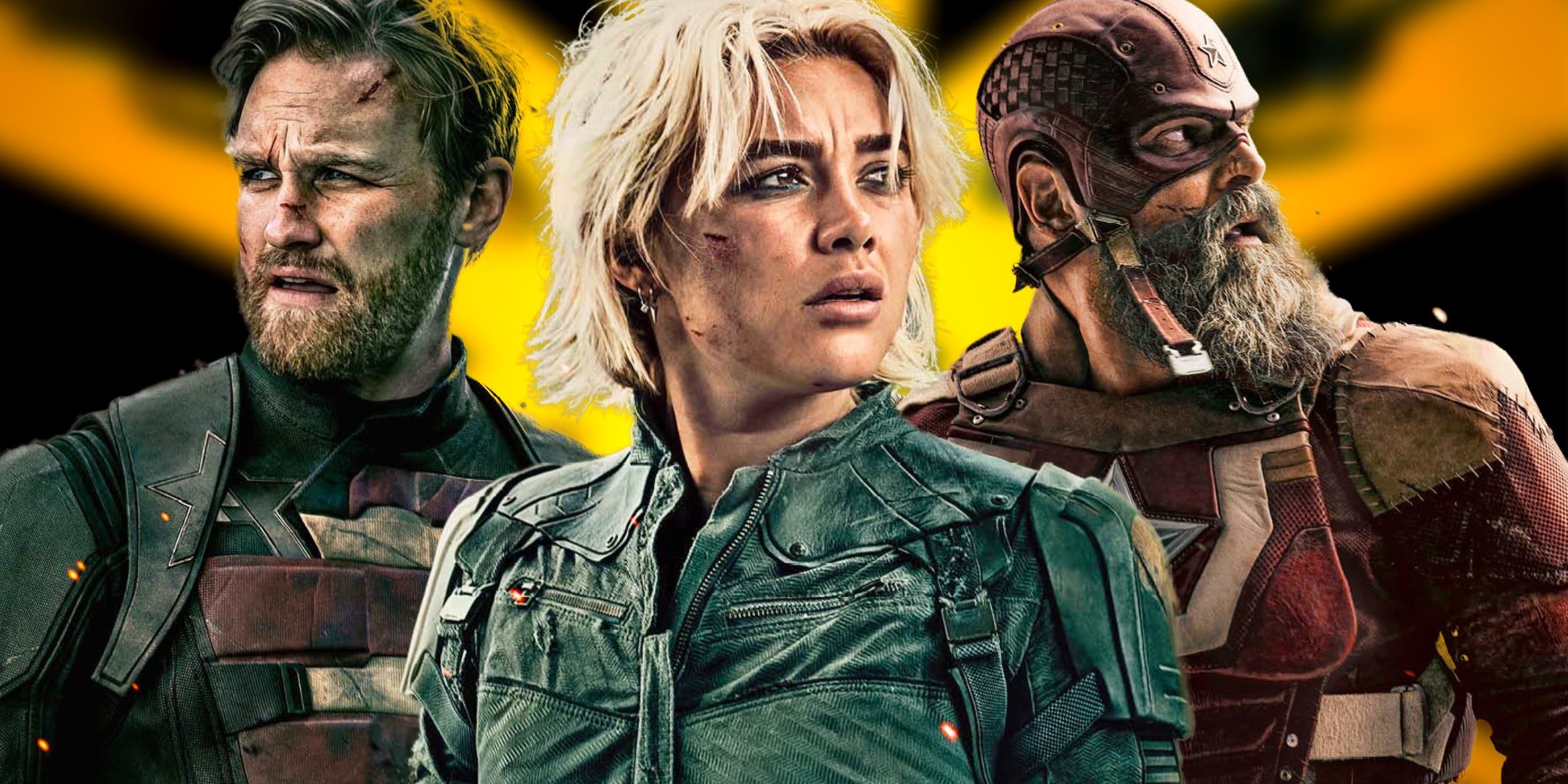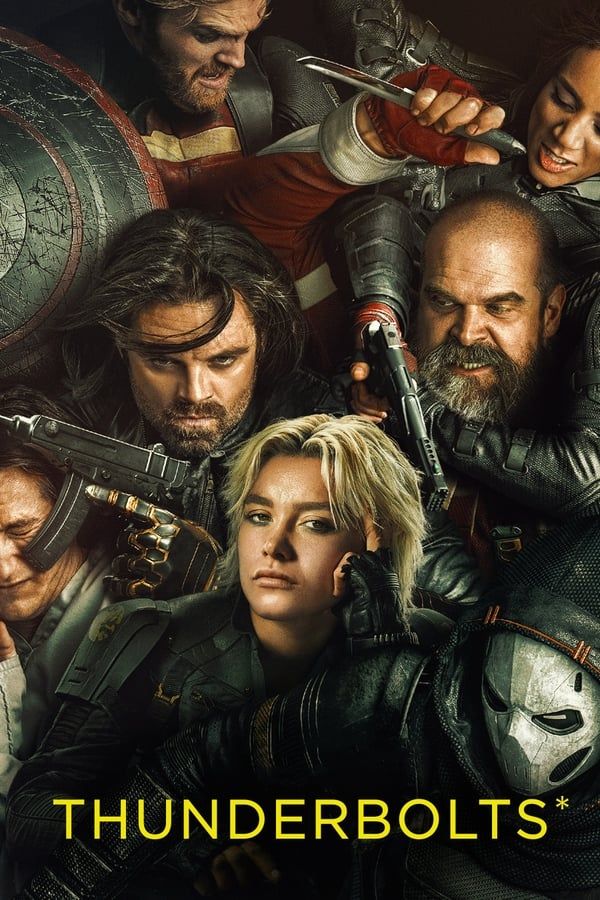In a revealing interview, writer Eric Pearson discusses how Thunderbolts* almost featured John Walker as the primary antagonist, replacing Sentry and the Void as the film’s main villain. The character of Robert Reynolds, also known as Sentry, stands out as one of the most formidable and distinctive villains in the Marvel Cinematic Universe (MCU). In the film’s conclusion, he receives crucial emotional backing from the Thunderbolts, leading to his honorary inclusion in the New Avengers during the post-credits scene, which cleverly sets the stage for the upcoming Avengers: Doomsday.
In an exclusive chat with ScreenRant, Thunderbolts* writer Eric Pearson reveals that Wyatt Russell’s character, John Walker a.k.a. US Agent, was considered as the movie’s final villain during the development stages. Pearson explains that Val would have manipulated Walker into believing that his Super Soldier serum was “wearing off.” Similar to the approach taken by Samuel Sterns with President Ross in Captain America: Brave New World, Val would have artificially enhanced Walker’s abilities until he became a metaphorical “time bomb.” Ultimately, Sentry was a more fitting choice for the film’s themes surrounding mental health, resulting in John Walker remaining a hero. Below are Eric Pearson’s full insights:
ScreenRant: One aspect I truly appreciate about this film is its profound message regarding mental health. The film’s climax resonates emotionally. Was it crafted specifically to symbolize depression, or was it intended to represent internal struggles more generally?
Eric Pearson: “That’s a challenging question because I wasn’t consciously focusing on the theme at that moment. The original drafts featured John Walker as the main antagonist in the final act. The concept was that part of Val’s manipulation involved her convincing him that his serum was depleting, and she was administering various medications to keep him functioning. In truth, he was a ticking time bomb; a sort of Hulk scenario. There was going to be a moment reminiscent of ‘Sun’s getting real low’ because from the outset, I wanted to conclude our third act battle with a hug.”
That iteration was somewhat entertaining but ultimately felt out of place in terms of tone. I had already woven in elements reminiscent of The Breakfast Club, so I thought, “I want a character that they can’t simply defeat with punches, someone they need to connect with on an emotional level.”
Back when I participated in the Marvel Writers Program around 2010 or 2011, I had read the Sentry comics. The narrative contrasts a golden embodiment of good against pure evil. However, I contemplated, “What if we explore themes of heroic ambition and self-esteem versus self-loathing, depression, and loneliness?” Essentially, he embodies the entire journey of our heroes consolidated into one character. Once I integrated him into the storyline, he fit seamlessly. Then, it became about delineating the Void aspect and the associated themes.
This idea parallels that of Zemo, where in the comics, the Sentry possesses immense power and realizes the threat he poses, leading him to erase his memories from everyone. It’s an engaging comic book concept that may not translate well into this film, yet we aimed to incorporate as many elements as possible.
We retained aspects such as the memory loss, the duality of his character, and the notion of him being an experiment gone awry. The goal is to honor the comics while fitting these elements into the cinematic universe appropriately. I take great pride in this because it’s a complex task to achieve without feeling forced.”
How Thunderbolts* Could Have Taken a Different Direction
Thunderbolts* could have taken a significantly different approach, as earlier drafts of the film included various alternate elements. Initially, Steven Yeun was slated to portray Bob a.k.a. Sentry, while Taskmaster was meant to survive and form a connection with Ghost. Additionally, Baron Zemo played a more secretive role behind the scenes, and John Walker was nearly the final villain in Thunderbolts*. Jake Schreier’s adaptation of Thunderbolts* has received critical acclaim, indicating that each modification made throughout its development was beneficial.
The Final Version of Thunderbolts* is the Optimal Choice for the Narrative
The complexities of Sentry‘s internal conflicts render him the ideal villain for a film that emphasizes the significance of mental health like Thunderbolts*. Moreover, the fact that John Walker was initially considered as the main antagonist showcases the creative team’s dedication to refining the film until they arrived at the definitive script for Thunderbolts*. While concepts such as Val’s manipulation of John Walker and Baron Zemo‘s hidden antagonist role could have been intriguing, they ultimately did not align with the film’s overarching narrative. Additionally, the adaptation of the Void in the MCU provides a fresh perspective on this villainous Marvel character.

Related
Thunderbolts* 50 Marvel Easter Eggs & References Explained
Marvel’s Thunderbolts* features an impressive collection of Easter eggs, references, and connections to both the comics and the greater MCU.
Even without a sequel set-up, Thunderbolts* makes a bold statement that hints at future developments. While the name change of the Thunderbolts seems to diverge from the comic book team within the MCU, it aligns with each member’s current status within the timeline. Ultimately, Thunderbolts* provides previously overlooked characters like John Walker and Ghost with a second chance at redemption, and it is likely that Avengers: Doomsday will continue to explore their journeys.

Thunderbolts*
- Release Date
-
May 2, 2025
- Runtime
-
126 Minutes
- Director
-
Jake Schreier
- Writers
-
Eric Pearson, Joanna Calo
Explore the Upcoming Marvel Cinematic Universe Movies

[nospin]Here you can find the original article; the photos and images used in our article also come from this source. We are not their authors; they have been used solely for informational purposes with proper attribution to their original source.[/nospin]







